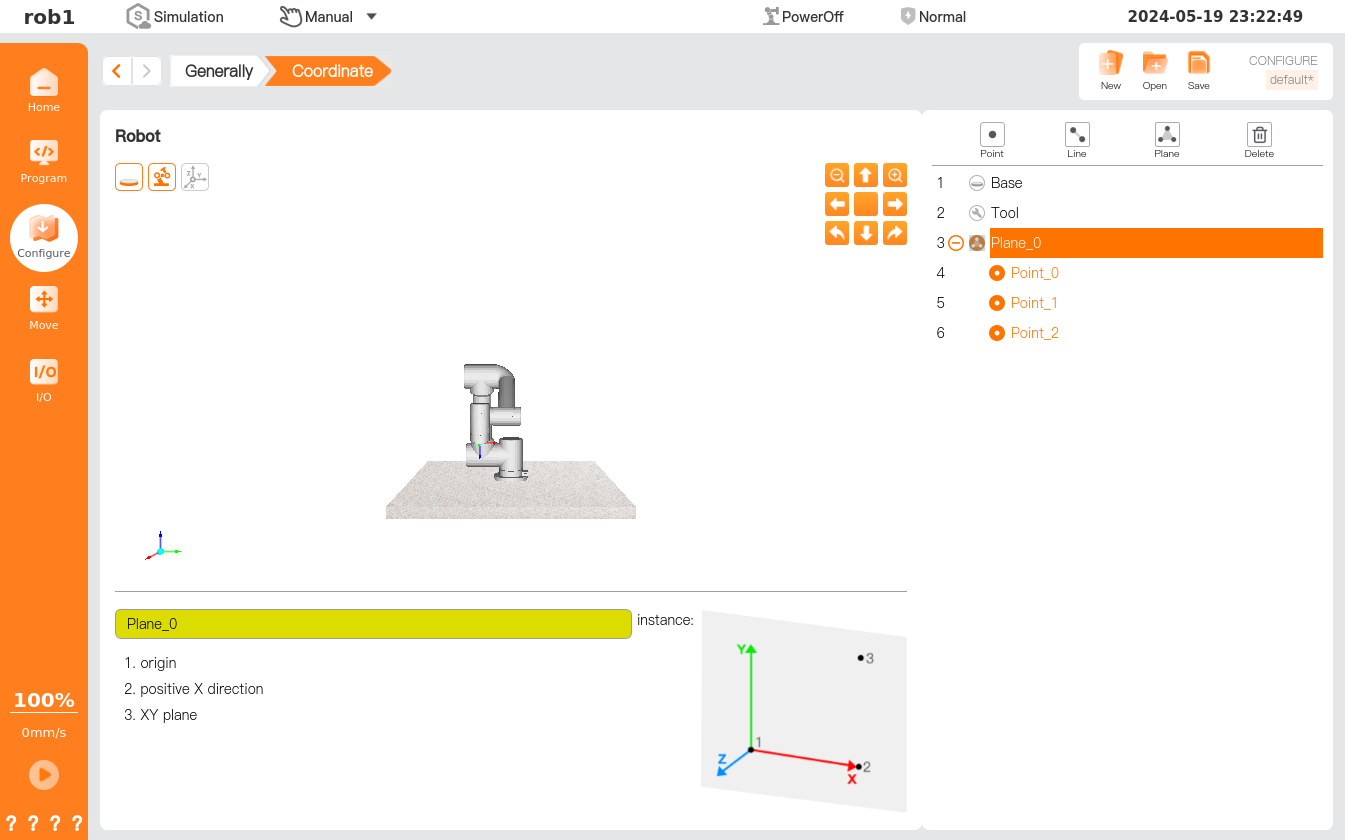5.1.9 Coordinate
You can employ a coordinate system to depict various objects or boundaries. For example, a robot may move relative to an object (if necessary), which could be a table, workpiece, blank, another machine, or a boundary around the robot. Under such circumstances, it is necessary to employ a custom coordinate system to depict these objects, and name the custom coordinate system for utilization.
On [Coordinate] page, you can create a new coordinate system in the form of point, line or plane. The new coordinates are positioned by the position of TCP. After selecting the method to create a new coordinate system, you can show the position of the coordinate system by moving TCP to the target pose.

 Point: Create a new coordinate system with a point.
Point: Create a new coordinate system with a point. Line: Create a new coordinate system with a line.
Line: Create a new coordinate system with a line. Plane: Create a new coordinate system with a plane.
Plane: Create a new coordinate system with a plane._3@2x.png) Delete: Delete the selected coordinate system.
Delete: Delete the selected coordinate system.
Predefined coordinate system
The robot has two predefined coordinate systems, the poses of which are defined by the robot's configuration:
Base coordinate system (Base): The origin is at the center of the robot base.
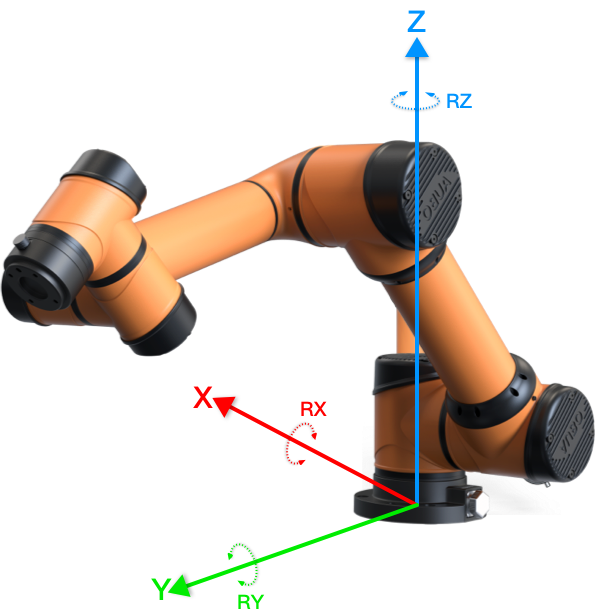
Tool coordinate system (Tool): The origin is at the center of the current TCP.

Create a new coordinate system with a point
Creating a new coordinate system with a point, i.e. showing the position of a new coordinate system origin through TCP, with the coordinate system axes orienting in the same directions as those of TCP. This method is typically used to define a security boundary or global primary configuration for a robot.
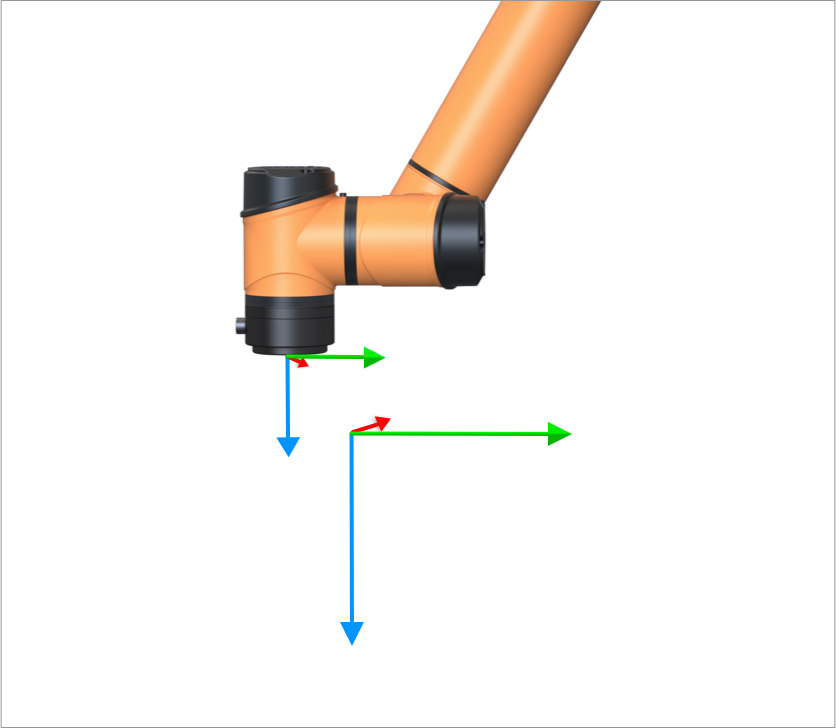
Tap [Point]
 to create a new coordinate system.
to create a new coordinate system.Tap input box below to rename the newly created coordinate system. Tap [Edit], control the robot using the position/pose control button and complete necessary settings, and then tap [OK] to save the data and return to the [Coordinate] page. Pose information used to set the point is displayed below the simulation model.
Tap [Joint Move to Here] or [Line Move to Here] to enter the [Move] page, and press and hold [Auto] to move the robot back to the pose used in creating the current coordinate system.
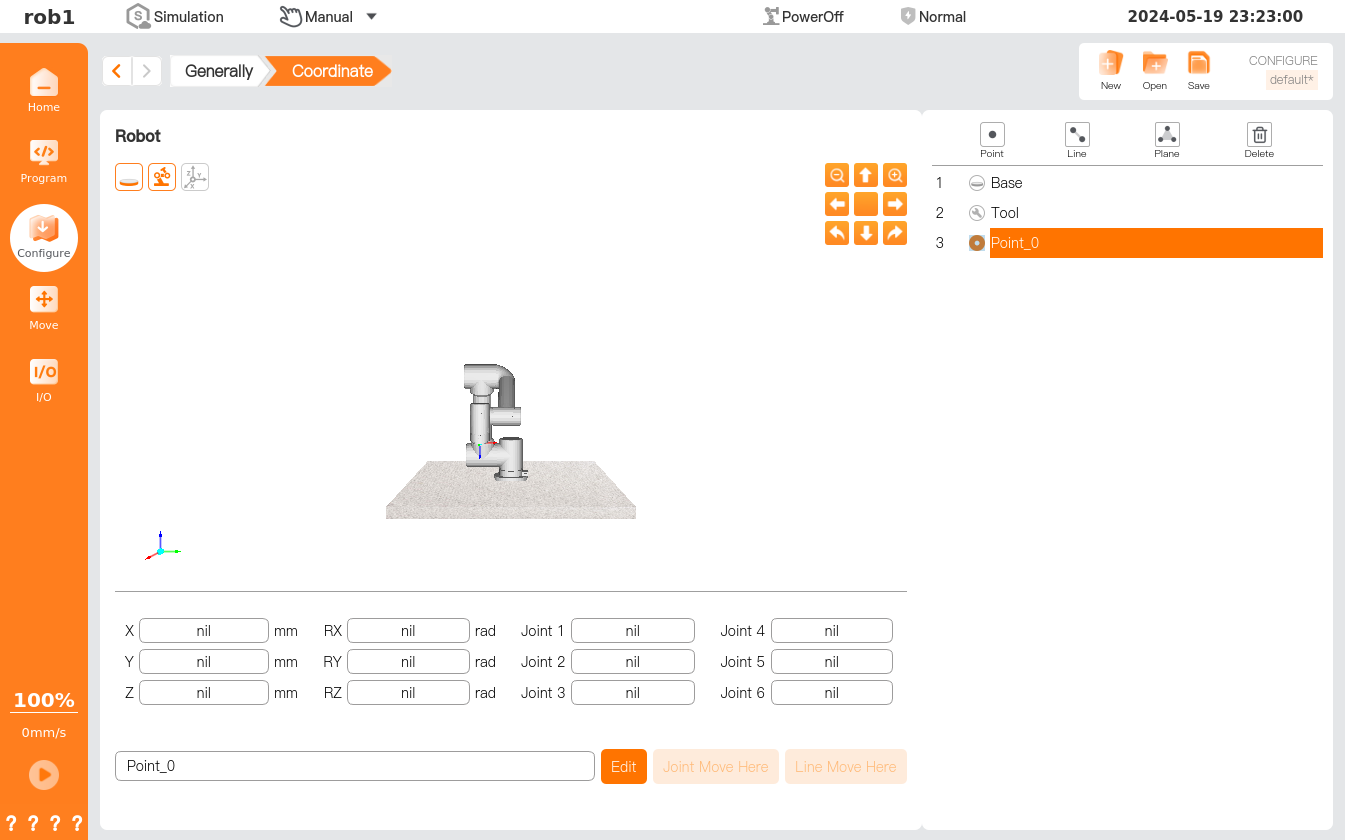
Create a new coordinate system with a line
Create a new coordinate system with a line, with the first point as the system origin; the Y axis represents a line from the first point to the second point; the Z axis represents the projection of the Z axis of the first point on a plane perpendicular to the line. This method defines the moving lines that the robot needs to follow.
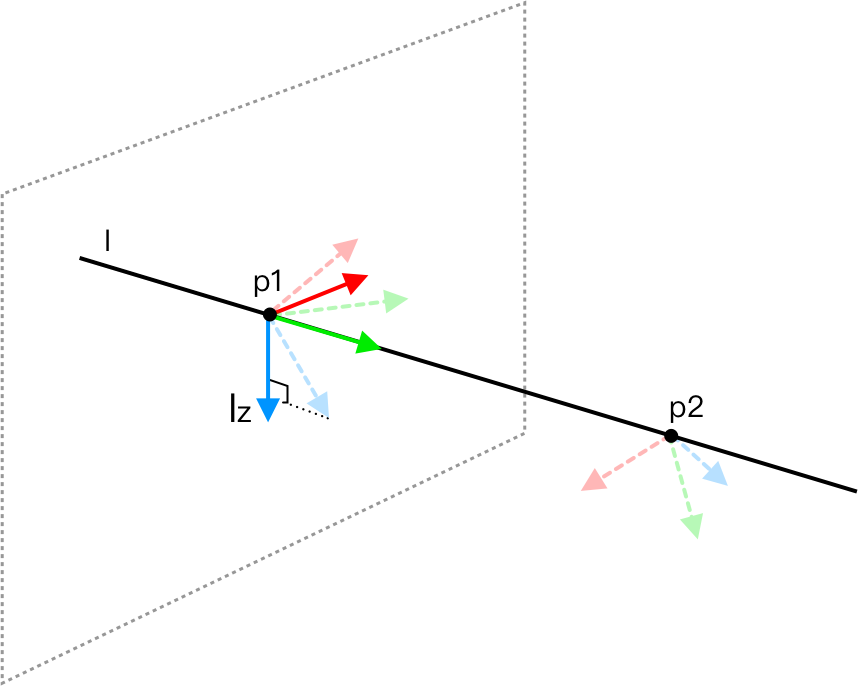

Tap [Line]
 to create a new coordinate system.
to create a new coordinate system.Tap the input box to rename the newly created coordinate system.
Tap
 to expand the list, select waypoints one by one, tap [Edit], control the robot using the position/pose control button, complete necessary settings, and then tap [OK] to save the data and return to the [Coordinate] page.
to expand the list, select waypoints one by one, tap [Edit], control the robot using the position/pose control button, complete necessary settings, and then tap [OK] to save the data and return to the [Coordinate] page.Tap [MoveJ to Here] or [MoveL to Here] to enter the [Move] page, and press and hold [Auto] to move the robot back to the pose used in creating the current coordinate system.
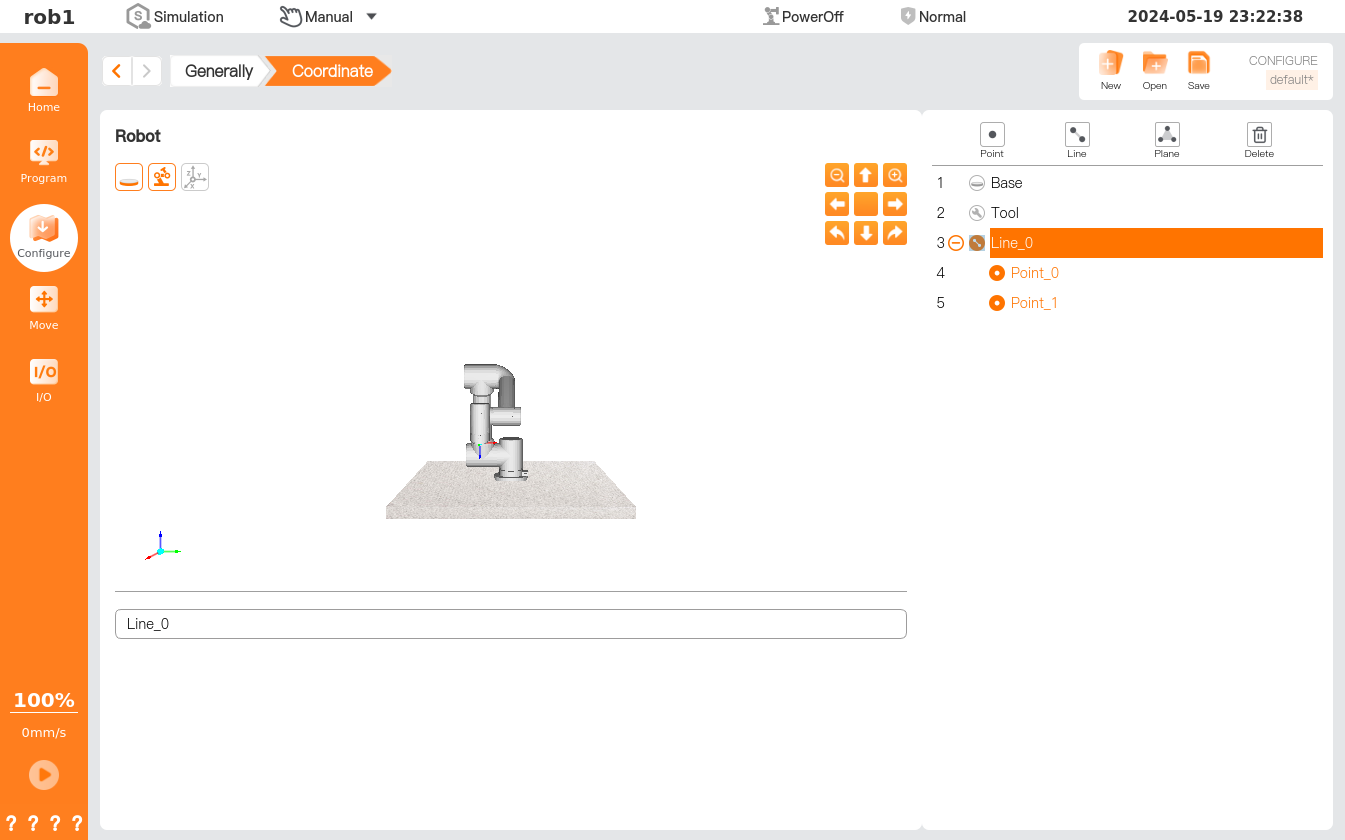
Create a new coordinate system with a plane
Creating a new coordinate system with a plane, also referred to as creating a coordinate system with the three-point plot method, involves taking the first point as the system origin; the Y axis is a line from the first point to the second point; the third point falls on the XY plane, with the Z axis perpendicular to the XY plane, satisfying the right-hand rule. This method is generally adopted when a high-precision frame is required, such as moving the robot relative to a table.
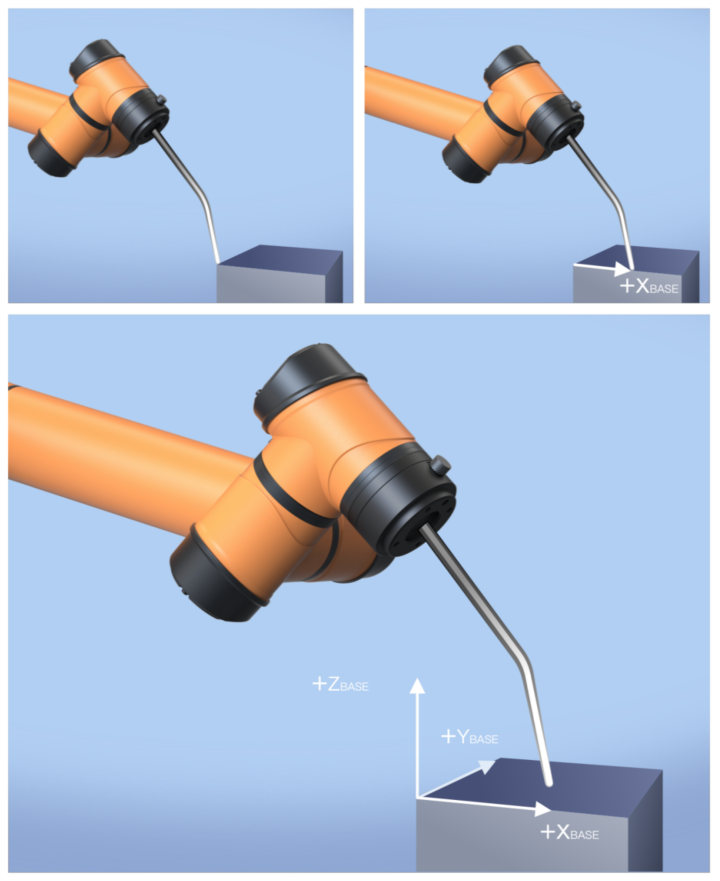
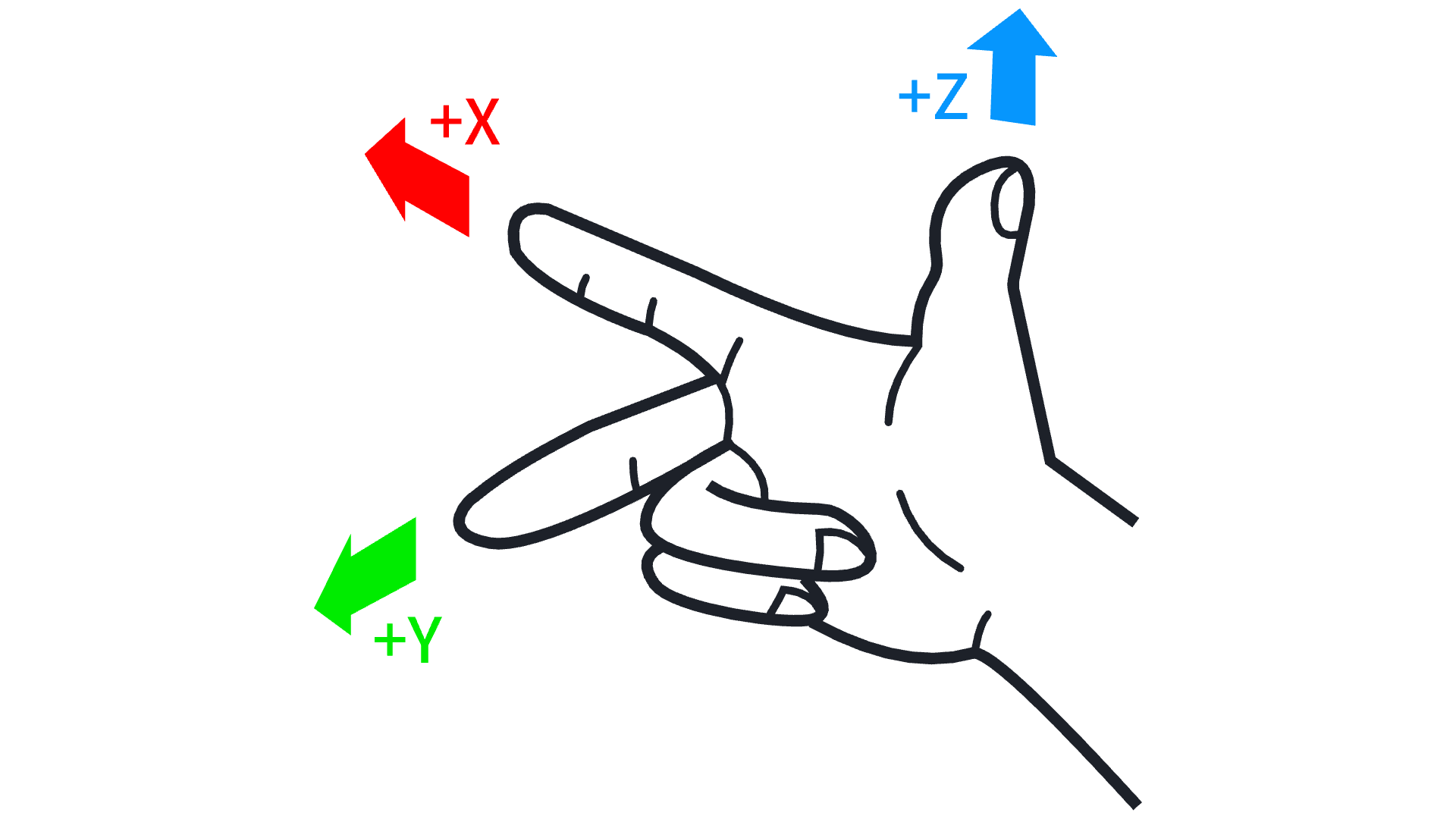
Tap [Plane]
 to create a new coordinate system.
to create a new coordinate system.Tap the input box to rename the new coordinate system.
Tap
 to expand the list, select waypoints one by one, tap [Edit], control the robot using the position/pose control button, complete necessary settings, and then tap [OK] to save the data and return to the [Coordinate] page.
to expand the list, select waypoints one by one, tap [Edit], control the robot using the position/pose control button, complete necessary settings, and then tap [OK] to save the data and return to the [Coordinate] page.